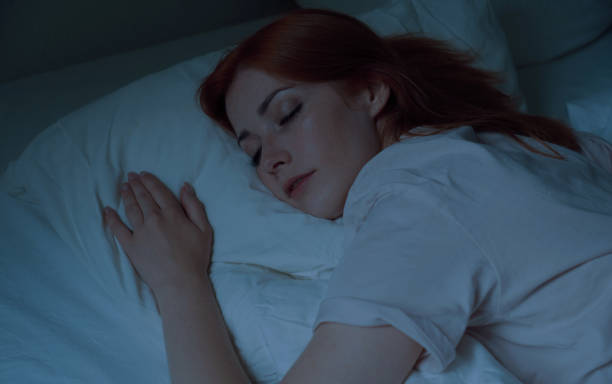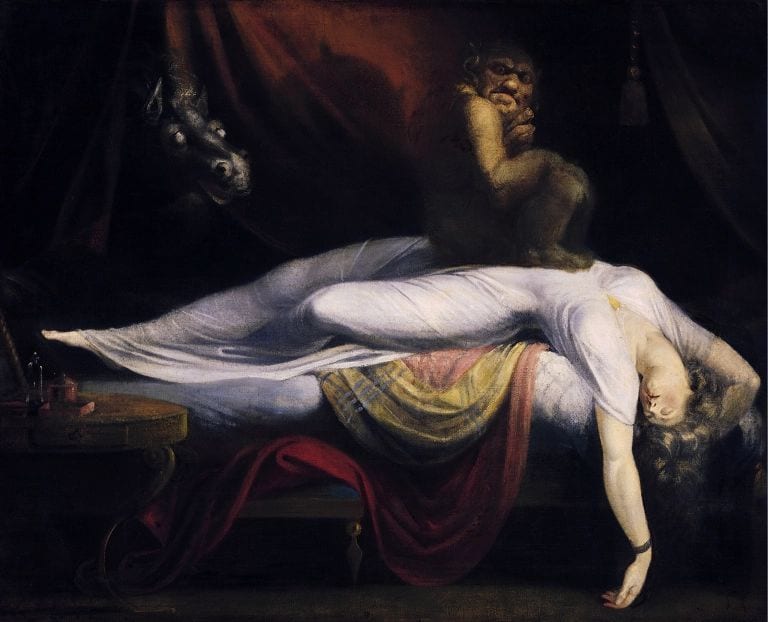Dreams have fascinated humanity for as long as we have been able to record our thoughts. From ancient prophets who believed dreams carried divine messages to modern neuroscientists probing the sleeping brain with advanced imaging tools, our species has always been captivated by what happens in the theater of the mind at night. Yet despite centuries of speculation and decades of research, the question remains deeply mysterious: why do we dream?
Modern science has brought remarkable insight into the biology, psychology, and evolution of dreaming. We now know much about when dreams occur, what brain regions are active during sleep, and how dream experiences connect to memory, emotion, and creativity. Still, the deeper purpose of dreaming remains one of neuroscience’s most tantalizing enigmas. Some researchers see dreams as mere by-products of brain activity during sleep, while others argue that they play vital roles in emotional regulation, memory processing, and even problem-solving.
To understand why we dream, it is essential first to understand what happens to the brain during sleep—because dreaming is not an isolated phenomenon, but a product of one of the brain’s most complex and essential states.
The Architecture of Sleep
Sleep is not a uniform state of rest. It is a dynamic and cyclical process composed of distinct stages that the brain cycles through several times each night. Scientists classify these stages into two main categories: non-rapid eye movement (NREM) sleep and rapid eye movement (REM) sleep. Each plays a different role in maintaining mental and physical health, and each is associated with different types of brain activity.
NREM sleep is divided into three stages, ranging from light sleep to deep slow-wave sleep. During these phases, the body repairs tissues, builds bone and muscle, and strengthens the immune system. Brain activity slows, heart rate and breathing decrease, and consciousness fades into a quiet state of rest. Although dreams can occur during NREM sleep, they tend to be fragmented, less emotional, and more thought-like.
REM sleep, by contrast, is when most vivid and emotionally intense dreaming takes place. This stage is marked by rapid eye movements beneath closed eyelids, irregular breathing, and near-complete muscle paralysis—a phenomenon called REM atonia, which prevents the sleeper from physically acting out their dreams. Paradoxically, although the body appears deeply asleep, the brain during REM sleep is almost as active as when awake. Brain scans show heightened activity in visual, emotional, and memory-related regions, while the prefrontal cortex—the area responsible for rational thought and decision-making—is relatively subdued. This unique pattern helps explain why dreams feel vivid and emotional yet often lack logical coherence.
The Biology of Dreaming
Dreaming arises from the complex interplay of neural circuits, neurotransmitters, and brain structures that become active during REM sleep. One of the key players is the pons, a region in the brainstem that helps regulate REM cycles and triggers the activation of the visual cortex, leading to the imagery we perceive as dreams.
When REM sleep begins, neurons in the pons send signals to the thalamus, which relays information to the cerebral cortex. At the same time, other signals suppress motor neurons in the spinal cord, producing muscle paralysis. Neurotransmitters such as acetylcholine, dopamine, and serotonin fluctuate dramatically during this time, shaping the quality and intensity of dreams. High levels of acetylcholine promote cortical activation and vivid imagery, while decreased levels of serotonin and norepinephrine reduce the brain’s critical and analytical capacities, allowing bizarre or surreal dream narratives to unfold without interruption.
Functional MRI (fMRI) studies have shown that during dreaming, the limbic system—especially the amygdala and hippocampus—is highly active. The amygdala processes emotions like fear and pleasure, while the hippocampus integrates memories. This combination gives dreams their strong emotional charge and their tendency to weave together fragments of past experiences in unexpected ways.
Meanwhile, the prefrontal cortex, which normally imposes order and logic, is less active, which explains why we accept illogical dream events as normal and why our sense of time and identity can become fluid.
Historical Perspectives on Dreaming
Throughout history, humans have tried to interpret the meaning of dreams. In ancient civilizations, dreams were often viewed as messages from gods or spirits. The Babylonians, Egyptians, and Greeks all produced elaborate dream manuals that sought to decode dream symbols. In these traditions, dreams were not internal brain activity—they were communications from a supernatural world.
In the late 19th and early 20th centuries, psychology brought dreams into the scientific realm. Sigmund Freud, in his 1899 masterpiece The Interpretation of Dreams, proposed that dreams are expressions of unconscious desires and conflicts. He argued that the bizarre imagery of dreams represented disguised wish fulfillment—an attempt by the unconscious mind to satisfy repressed emotions and instincts in symbolic form. Freud’s theory revolutionized the study of dreams, framing them as psychological phenomena rather than mystical experiences.
Carl Jung, Freud’s former student, expanded the concept by proposing that dreams express not only personal unconscious material but also universal archetypes that arise from what he called the collective unconscious. For Jung, dreams were a dialogue between the conscious and unconscious mind, helping individuals achieve psychological balance and self-understanding.
Although Freud and Jung’s theories are now considered more symbolic than scientific, they laid the groundwork for modern dream research by establishing the idea that dreams reflect meaningful psychological processes rather than random noise.
The Emergence of Modern Dream Science
Scientific study of dreaming entered a new era in the 1950s with the discovery of REM sleep by Eugene Aserinsky and Nathaniel Kleitman at the University of Chicago. They observed that sleepers’ eyes moved rapidly beneath their lids during certain phases of the night and that this stage corresponded to vivid dream reports upon awakening. This discovery provided the first measurable, physiological basis for dreaming and allowed researchers to study it in controlled laboratory conditions.
Subsequent research using electroencephalography (EEG) and later brain imaging technologies has revealed that dreaming is a reproducible and consistent phenomenon tied to specific patterns of brain activity. These findings marked the beginning of a new science—oneirology, the systematic study of dreams.
In the decades since, neuroscientists have proposed various models to explain why we dream. Some emphasize random neural activation and cognitive synthesis, while others see dreaming as an essential part of how the brain processes emotions, memories, and learning experiences.
The Activation-Synthesis Hypothesis
One of the most influential scientific theories of dreaming is the activation-synthesis hypothesis, proposed by J. Allan Hobson and Robert McCarley in the 1970s. According to this model, dreams are the brain’s attempt to make sense of random neural activity generated during REM sleep.
As the pons activates different regions of the brain, including those involved in emotion, sensation, and memory, the cerebral cortex attempts to weave these random signals into a coherent narrative. In this view, dreams do not have hidden symbolic meanings but are instead the by-products of the brain’s interpretive machinery trying to impose order on chaos.
Although the activation-synthesis model explained the bizarre and fragmented nature of dreams, later research showed that dreaming is not purely random. Patterns in dream content often relate to personal experiences, emotions, and ongoing concerns, suggesting that dreams are influenced by meaningful mental processes even within the framework of spontaneous neural activation.
The Memory Consolidation Theory
Another major line of research suggests that dreams play a vital role in memory consolidation—the process by which the brain organizes and stores information learned during the day. During sleep, particularly during REM and deep NREM stages, neural connections are strengthened or weakened to optimize memory retention.
Experiments have shown that people who are deprived of REM sleep perform worse on memory and learning tasks. Brain imaging also reveals that the same neural networks activated during learning are reactivated during sleep, implying that the brain rehearses and reorganizes experiences. Dreams may represent the conscious “echo” of this process—mental simulations that help integrate new information with existing knowledge.
Dreams often incorporate fragments of recent events, a phenomenon known as the day residue effect. However, they also blend these memories with older experiences, creating imaginative scenarios that may serve to test and refine our understanding of the world.
Dreams and Emotional Regulation
A growing body of evidence suggests that dreaming helps regulate emotions. During REM sleep, the brain processes emotional experiences without the stress hormones that accompany waking consciousness, creating a “safe space” for emotional recalibration.
Neuroscientist Matthew Walker and others have proposed that dreams act as a form of overnight therapy. In REM sleep, the amygdala remains active while levels of norepinephrine, a stress-related neurotransmitter, drop dramatically. This combination allows the brain to revisit and reprocess emotional experiences in a calmer chemical environment. As a result, we wake up feeling emotionally balanced and more resilient.
Studies have shown that people who experience trauma often suffer from nightmares and disturbed REM sleep, which can hinder emotional healing. Conversely, healthy dreaming appears to help integrate distressing memories and reduce their emotional charge. This theory suggests that dreaming is not simply a passive experience—it serves a psychological function essential for mental well-being.
Problem-Solving and Creativity in Dreams
Dreams are not only emotional—they can also be creative. Throughout history, many inventors, scientists, and artists have claimed that their dreams inspired important ideas. The chemist August Kekulé famously dreamed of a snake biting its own tail, which led him to the discovery of the ring structure of the benzene molecule. Similarly, Paul McCartney reportedly heard the melody of “Yesterday” in a dream, and mathematician Srinivasa Ramanujan described receiving complex mathematical formulas through dreamlike visions.
Scientific studies support the idea that dreaming enhances creativity and problem-solving. During sleep, the brain forms novel associations between ideas that might not connect during waking thought. This occurs because the prefrontal cortex, which filters out irrelevant connections during wakefulness, becomes less active in REM sleep, allowing more flexible thinking.
Experimental research has demonstrated that people who nap or dream after working on complex problems are more likely to find creative solutions. This has led some scientists to view dreaming as a natural form of cognitive exploration—a mental playground where the brain experiments with ideas and scenarios beyond the constraints of logic and reality.
The Threat Simulation Theory
Another evolutionary perspective on dreaming is the threat simulation theory, proposed by Finnish cognitive neuroscientist Antti Revonsuo. This theory suggests that dreaming evolved as a biological defense mechanism, enabling humans to rehearse responses to threats in a safe virtual environment.
According to this view, dreams simulate dangerous or challenging situations—such as being chased, attacked, or confronted—allowing the brain to practice survival strategies. Because REM sleep activates the same neural pathways involved in fear and stress responses, it could help individuals prepare for real-life dangers by fine-tuning emotional and behavioral reactions.
This theory is supported by findings that threatening events are disproportionately common in dreams, and that people who live in dangerous environments report more threat-related dreams. In this way, dreaming might represent an adaptive evolutionary tool rather than a meaningless by-product.
Lucid Dreaming: Awareness Within the Dream
Among the most fascinating phenomena in dream research is lucid dreaming, a state in which the dreamer becomes aware that they are dreaming and, in some cases, can exert control over the dream environment. Lucid dreams occur primarily during REM sleep and have been verified through experiments in which trained lucid dreamers signal their awareness with prearranged eye movements while remaining asleep.
Brain imaging studies show that lucid dreaming involves increased activation of the prefrontal cortex compared to regular REM sleep, suggesting a partial reawakening of self-awareness and executive function. This unique state blurs the boundary between waking consciousness and dreaming, offering scientists a rare window into the workings of subjective awareness.
Lucid dreaming has potential applications in therapy and mental health. For example, individuals suffering from recurrent nightmares can use lucid techniques to confront or alter distressing dream scenarios, reducing anxiety and improving sleep quality. It also offers insights into consciousness itself, illustrating how awareness can exist across multiple levels of brain activity.
Nightmares and the Dark Side of Dreaming
Not all dreams are pleasant. Nightmares—vivid, disturbing dreams that cause strong negative emotions such as fear, anxiety, or sadness—are an integral part of the dreaming spectrum. While occasional nightmares are normal, frequent ones can disrupt sleep and indicate underlying psychological distress.
Nightmares are most common during REM sleep and often occur when the dreamer is under stress, sleep-deprived, or experiencing trauma. In post-traumatic stress disorder (PTSD), recurring nightmares replay aspects of traumatic events, trapping sufferers in cycles of fear and sleeplessness. Researchers believe these nightmares may represent the brain’s attempt to process trauma that remains unresolved.
Therapies such as imagery rehearsal therapy (IRT) train patients to consciously alter the narrative of recurring nightmares while awake, reducing their intensity and frequency. These findings reinforce the view that dreams are closely linked to emotional health, acting as both mirrors of the psyche and mechanisms for healing.
The Future of Dream Research
Dream research has entered a new frontier with the advent of advanced neuroimaging, artificial intelligence, and brain-computer interfaces. Scientists can now record brain activity during sleep and, to a limited extent, infer the visual or conceptual content of dreams. Machine learning algorithms trained on fMRI data have been able to identify rough categories of dream imagery, such as faces, objects, or movement, hinting at the possibility of decoding dreams more accurately in the future.
In addition, researchers are exploring the potential of targeted memory reactivation, a technique that uses subtle sensory cues (like sounds or scents) during sleep to influence dream content and memory consolidation. This approach could one day be used to enhance learning, treat phobias, or reduce traumatic nightmares.
The intersection of neuroscience, psychology, and technology promises to transform our understanding of dreaming. However, ethical questions remain. As we gain more power to manipulate or decode dreams, we must consider privacy, consent, and the deeply personal nature of inner experience.
Dreams Across Cultures and Time
Despite scientific advances, dreams retain deep cultural and spiritual significance. In many Indigenous and ancient traditions, dreams are still regarded as portals to other realms or sources of wisdom. Australian Aboriginal cultures speak of the “Dreamtime,” a sacred dimension of creation that shapes reality itself. Similarly, in many Native American traditions, dreams are seen as messages from ancestors or spirit guides.
Even in modern societies, people often interpret dreams symbolically, seeking personal meaning beyond the scientific view. While neuroscience focuses on the mechanisms of dreaming, cultural and psychological interpretations remind us that dreams also reflect the narratives and values of human societies.
What Dreams Tell Us About Consciousness
Dreaming challenges our understanding of consciousness. During dreams, we experience vivid sensations, emotions, and self-awareness, even though the external world is shut out. The dreaming brain constructs a fully immersive reality from within—a reminder that our sense of reality itself is a creation of the mind.
Neuroscientists studying dreams are also studying the nature of consciousness itself: how the brain generates subjective experience. By comparing waking and dreaming states, researchers hope to identify the neural signatures of awareness and perception. In this sense, dreams serve as a bridge between the study of the mind and the mysteries of consciousness.
Conclusion
Dreaming remains one of the most intricate and mysterious functions of the human brain. Science has revealed much about its mechanisms and potential purposes—memory consolidation, emotional regulation, creativity, and evolutionary adaptation—yet no single theory fully explains the phenomenon. Dreams appear to be both functional and expressive, blending biology and psychology, randomness and meaning.
They reflect the constant dialogue between the conscious and unconscious mind, between logic and imagination. When we dream, our brains become storytellers, weaving fragments of memory, emotion, and desire into strange but deeply human narratives.
Ultimately, the study of dreams offers more than scientific insight—it offers a glimpse into the profound creativity of the human mind. Each night, within the theater of sleep, the brain rehearses, heals, and imagines worlds that vanish at dawn yet shape who we are. The mystery of why we dream endures, but one truth remains clear: dreaming is not a meaningless by-product of sleep, but a window into the very essence of what it means to be conscious, emotional, and alive.






